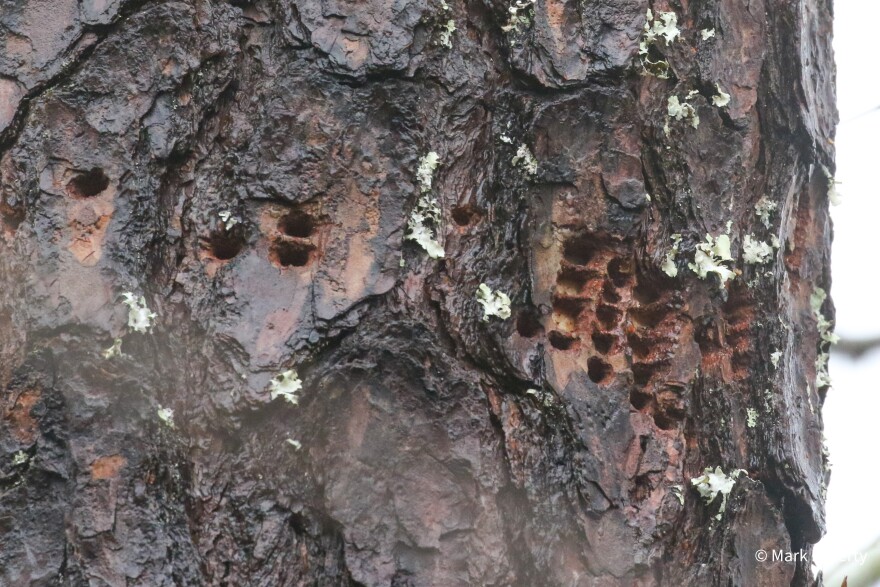On a couple of recent days I spent some time doing what bird watchers are often criticized for not doing – I actually watched a bird. What I mean is, I didn’t just quickly identify it, check it off a list, and move on. I actually watched it, studied it at length. Ok, “at length” is a stretch – I watched it for a few minutes at a time between kid crises because it was hanging out on a tree outside my bedroom window, but everything is relative. The bird in question was an uncommon woodpecker known as a Yellow-bellied Sapsucker, and the experience prompted me to peck and probe a little deeper into the crevices of their natural history.
Of the several sapsucker species in North America, the Yellow-bellied is the only one here in the East. Adults are stunning creatures, especially males, sporting a bright red forehead and throat, black and white mask, and a big white racing stripe down the wing. The yellow belly is usually there but subtle. Young birds have plain heads and are overall mottled with brown, helping them to blend in and avoid the Cooper’s Hawks who would love to snatch them off the trunk.
Yellow-bellied Sapsuckers breed in rich, mixed-deciduous northern forests, and winter from southern New England to Panama. In Massachusetts they breed only in Central and Western counties, where in some places the breeding population is so dense that there’s a sucker a born every minute, or so they say. At least I think that’s what that means. In any case, their populations are increasing and expanding eastwards as forests mature. They’ve also been skyrocketing as a locally wintering bird, as evidenced by Christmas Bird Count data – just 10 years ago, a sapsucker was a rare winter find here on Cape, but now they are routine.
Even so, I had never seen one in my yard until Sunday, when I noticed a well camouflaged immature bird pecking away at a pitch pine. By the time I saw it, it had already created a number of sap wells, little holes they place in neat horizontal rows on tree trunks in order to drink the sap that flows out. While you may have forgotten the difference between xylem and phloem since high school biology class, sapsuckers have not – the sucrose and minerals carried by those tissues are their livelihood, and some times of the year sap is all they eat. In spring, hummingbirds try to steal the sap, and the sapsuckers have to chase them away.

I showed my soon-to-be four-year-old son the sapsucker through the kitchen window and mentioned what it was eating. As we had just put syrup on his waffle, he made the astute observation that both we and the sapsucker were having sap for breakfast. Harvard, are you listening? I think I’ve got the next E. O. Wilson here. If I can get him over his obsession with construction vehicles, that is.
You are probably asking yourself, “hey bird guy, how much sap could a sapsucker suck if a sapsucker did suck sap?” Well, I’m glad you asked, because some PhD student in the 90s actually did the math. Based on standard metabolic equations, an average weight, unladen sapsucker would need 300 milliliters of sap per hour, which would require the production of at least 4 sap wells, assuming the sap is 1.9% sucrose. Got it?
I really enjoyed watching this bird over a couple of days, during which it spent about 80% of its time on just a couple of square feet of one tree, alternating between quietly excavating or maintaining well holes and eating sap and cambium. If it were just a few trees back I never would have known it was there.

You may not see one in your yard tomorrow, but on your next hike you can probably find evidence they were there – the parallel rows of small holes they make are easy to find on local trees since they persist for years. Old apple trees are especially likely to have them. So your assignment this week is to find some old sapsucker wells, show them to a friend, and enjoy it when they say “oh, that’s what those are," the sweet reward of nature know-it-alls everywhere.








